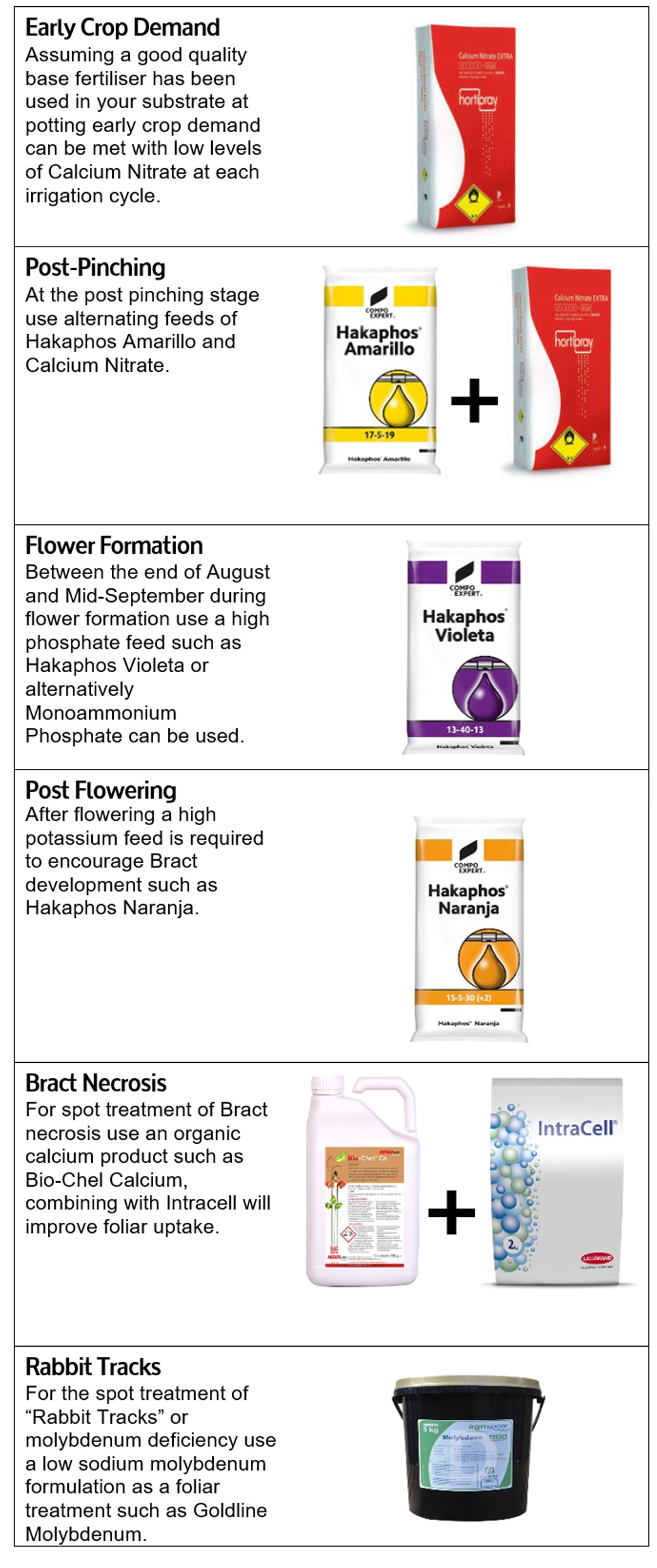Thursday 25th June 2020
It’s that time of year again when growers are planning to put the Christmas favorite back into the Glasshouse. It is important to consider Monitoring, Control Options and Fertigation to ensure crop quality can be maximised. Here are a few things to possibly consider:
1) Monitoring
Monitoring for pests in poinsettia crops is extremely important to ensure appropriate controls can be used at threshold levels. Major poinsettia pests such as Whitefly, Spider Mite and Thrip can go from manageable levels to serious infestations extremely quickly. Consider using both yellow and blue sticky monitoring traps, Thrip are particularly attracted to blue traps. For individual traps around 100 per Hectare are required to get a good sample, remember to circle identified pests on traps when crop walking. Where possible have the sticky side of traps facing South for the best results.
2) Control Options
Below are some control options worth considering for poinsettia crops:
Azatin©
Bioinsecticide with insect growth regulator [IGR] & repellent properties. Contact & translaminar mode of action. Effective on aphids, thrip & whitefly. Azatin offers the same level of protection as the recently withdrawn neonicotinoid – Actara; while still being safe on beneficial insects.
Naturalis-L©
Bioinsecticide which works through spores penetrating the thrip & whitefly exoskeletons to parasitise them from the inside. Death occurs within 2-3days. Safe on beneficial insects.
Applaud©
An insect growth regulator which targets eggs & nymph stages to disrupt glasshouse & tobacco whitefly lifecycles. Safe on beneficial insects.
Majestik©
Organic approved fast acting contact insecticide with short persistency, making it a suitable option for an IPM programme. Safe on beneficial insects.
Nematrident© S
Beneficial nematodes for the control of sciarid fly larvae in substrate with 70-98% efficacy down to 8°C.
Nematrident© F
Beneficial nematodes for the control of thrip larvae in substrate. In combination with a nematode specific wetter it provides better levels of control than insecticides & predatory mites.
3) Fertigation

For more in-depth information regarding control options be sure to consult your agronomist or speak to us regarding our agronomy services.


